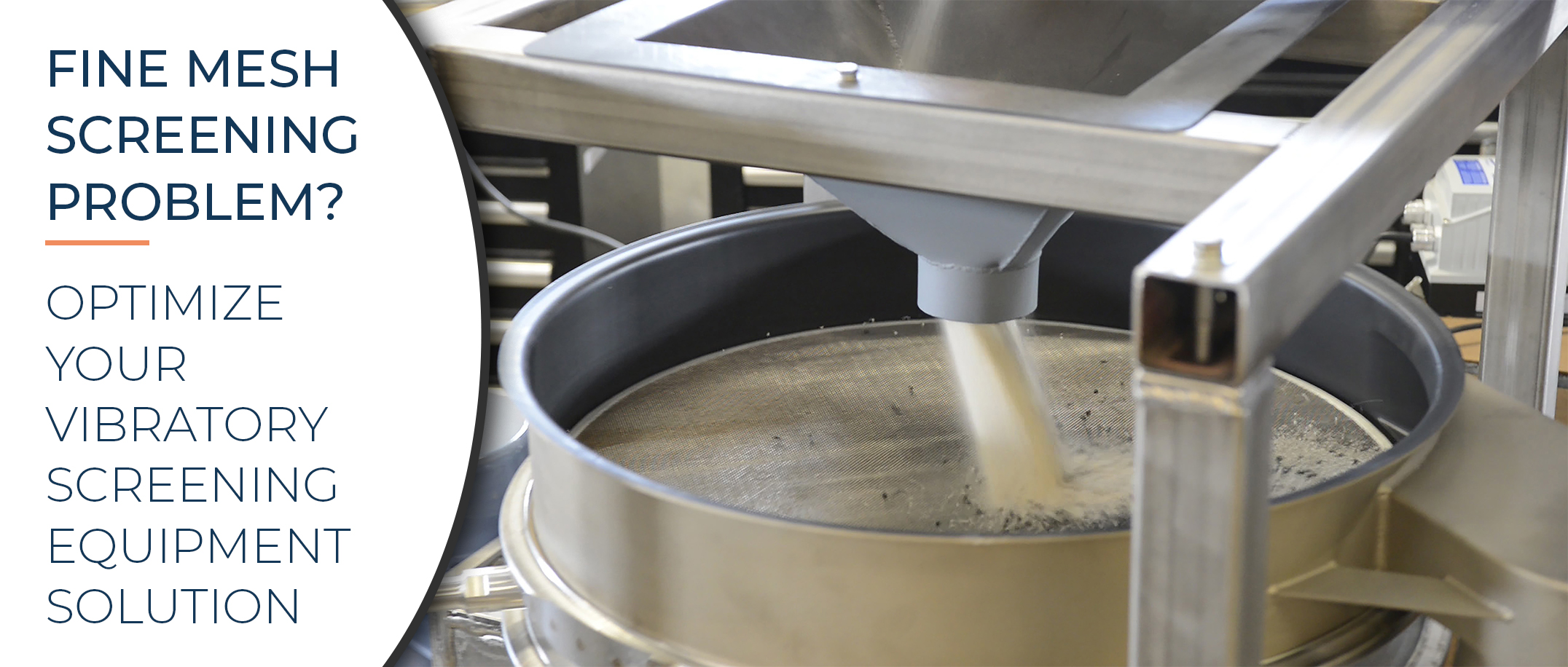Vibratory screening equipment comes in all shapes and sizes. While some are rectangular or round they all pretty much accomplish the same principle which is removing oversize particles from the desired product size. There are a number of variables that can affect the performance of the screens used on your screening equipment. In this blog, I will discuss a number of ways to optimize your vibratory screening equipment. (Note: some do not require special add ons.)
1) Feed rate: Too many times customers will complain that their screener is inefficient – losing too much “good product” in the oversize. My first recommendation is to slow the feed rate to determine if they are simply overcharging the actual capacity of the screener. By slowing the feed rate, the screener is allowed to process the fines through the wire mesh without losing fines through the oversize discharge. Make sure you are also adequately utilizing all of the screen surface as well – this will maximize throughput. The surface area free of any product during operation is wasted throughput.
2) Wire Mesh Maintenance/Quality: If you are experiencing premature wear on your wire mesh or inconsistent particle size in your product flow, inquire with your supplier regarding mesh certification or where the wire mesh is being manufactured. If your supplier cannot answer either question, find a supplier who can. There are a number of companies promoting inexpensive re-screening services that are using the least costly (cheapest) wire they can purchase. They have no idea where this wire is woven or the type of wire being used. Is it annealed wire? 304SS or 316SS? Poor wire mesh along with poor tension in the screening or re-screening process can lead to low tension of the screen surface. This will lead to reduced through-puts, or poor quality products, and most importantly – premature failure of the wire mesh. Loosely tensioned screens also lead to screens that tend to blind or clog more quickly.
3) Ultrasonic Sieving or Ultrasonic Deblinding Systems: Offered by The Cleveland Vibrator Company in corporation with HK Technologies, an ultrasonic sieving system is a more expensive solution than other methods of optimizing screen throughput but is by far the most effective device. Ultrasonics imparts a high-frequency low amplitude vibration to the wire mesh while at the same time reducing the surface tension between the fines and the wires. The ultrasonic system will dramatically increase your screening capabilities and yield without further wear of your screen surface. Other old school methods such as ball decks, clean rings, or brushes will cause premature screen failures and or tearing of your wire mesh.
While I love selling new equipment to customers, sometimes the solution to their problems involve some simple modifications to the most integral part of the screener – the screen surface. We are always willing to take a closer look at your material flow problem and create an innovative solution to keep you moving. See our website for more details.

Jeff Hochadel has over 25 years of experience building and selling vibratory screening equipment. Jeff is responsible for handling fine mesh screening applications for The Cleveland Vibrator Company. His expertise is utilizing our Ultrasonic Deblinding System to solve difficult screening problems. When Jeff is not visiting customers promoting our products you can most likely find him fly fishing.
Follow us:
Share this blog post:


